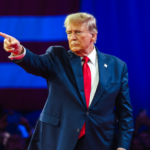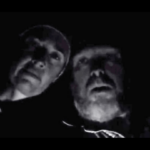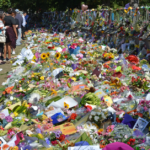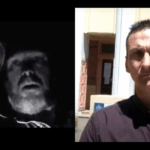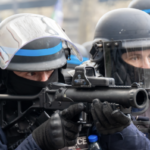Assassination of Charlie Kirk Shocks the World

The assassination of the founder of conservative youth organisation, Turning Point USA, has been denounced across the political spectrum and sheds further light on the deep social divisions within the United States.
The 31-year old – who expressed anti-immigration and ant-LGBTIQ+ views, as well as the view that a woman’s place is in the home – was fatally shot whilst on the podium answering questions about gun violence at Utah Valley University in Orem, Utah, on 10 September 2025.
Images of the suspected assassin have now been released to the public, which depict a white, University-aged male wearing a cap, sunglasses and T-shirt imprinted with an image of the American flag. A $100,000USD reward has been offered for information leading to the murderer’s arrest.
Widespread Condemnation
Kirk’s murder has sparked widespread condemnation across the political spectrum.
President Trump described the event as a ‘dark moment for America’ – sentiments echoed by political leaders including former President Biden and British Prime Minister Keir Starmer, as well as news organisations and political commentators.
The assassination has justifiably outraged right-wing conservatives, including supporters of the MAGA movement, raising concerns that escalated tensions will lead to further violence and potentially more deaths. Figures suggest there were 150 politically motivated attacks in the first half of 2025—twice the amount than same period in 2024 – and it has been reported that the bulk of politically motivated violence in recent years has been committed by those on the right wing, including:
- The man who targeted and killed Democratic state lawmaker Melissa Hortman and her husband Mark in their home in Minnesota in June was a Trump supporter.
- The man charged with the attempted assassination of Pennsylvania’s Democratic governor, Josh Shapiro, in April was a Trump supporter.
- The man convicted of orchestrating a series of shootings at the homes of four Democratic elected officials in New Mexico in 2022 was a Trump supporter.
- The man who tried to kidnap then Democratic House Speaker Nancy Pelosi and assaulted her husband, Paul, in 2022 was a Trump supporter.
- The men who wanted to hang Mike Pence on Jan 6, 2021, were Trump supporters.
- The man who killed the son of Obama-appointed District Judge Esther Salas in 2020 was a Trump supporter.
- The men who were convicted of trying to kidnap Michigan’s Democratic governor, Gretchen Whitmer, in 2020 were Trump supporters.
- The man who sent pipe bombs to the homes of Barack Obama, Joe Biden, Hillary Clinton, and other top Democrats in 2018 was a Trump supporter.
- The man who killed left-wing activist Heather Heyer after driving his car into a crowd of counter-protesters in Charlottesville in 2017 was a Trump supporter.
The murder of Charlie Kirk has intensified debate surrounding political extremism, civil discourse, and the safety of public figures in the United States, and there are hopes the spotlight on political violence will reduce such tragic incidents.
Factors Contributing to Political, Racial and Religious violence
The factors that contribute to political, racial and religious violence are multi-faceted and complex, and research suggests that the most effective way to reduce such conduct is to address these underlying issues, some of which include:
Economic Stress and Racial Anxieties
Economic instability, job insecurity, and widening wealth gaps can create a sense of frustration and disenfranchisement among communities. When combined with long-standing racial or ethnic tensions, these stressors amplify feelings of resentment toward specific groups or institutions. Individuals who feel left behind economically or socially may become more susceptible to extremist narratives that frame violence as a justified means of addressing grievances.
Amplification Through Social Media
Social media platforms have dramatically increased the speed and reach of information dissemination. While they enable community engagement and awareness, they also amplify extreme viewpoints, misinformation, and conspiracy theories.
Algorithms often favour content that provokes strong emotional reactions, which can radicalise individuals by repeatedly exposing them to polarising narratives. This echo chamber effect can normalise extreme actions, including political violence, as individuals come to see such behaviour as acceptable or necessary.
Erosion of Trust in Institutions
A decline in trust toward governmental bodies, law enforcement, and democratic institutions weakens the perceived legitimacy of official channels for addressing grievances. When people lose confidence in the fairness or effectiveness of political systems, some may view violence as a legitimate or even heroic method of influencing policy or challenging authority. This erosion of institutional trust also undermines social cohesion, making communities more vulnerable to division and radicalisation.
Cultural and Ideological Polarisation
Beyond economic and social pressures, increasing ideological polarisation—where political identities are tied closely to cultural, religious, or moral beliefs—intensifies conflict. In polarised environments, opponents are often dehumanised, and compromise is seen as weakness. This cultural divide can further lower the threshold for accepting or engaging in political violence.
Historical Precedents and Social Normalisation
Past incidents of political violence or publicised attacks on political figures can set a precedent, creating a perception that such actions are feasible or impactful. Exposure to violent political events may normalise aggression as a tool for effecting change, particularly among impressionable or radicalised individuals.
These are just a few of the potential contributing factors, and it is nearly beyond question that Charlie Kirk’s assassination was politically motivated – given his outspoken views – the assassin’s precise motivation is yet to be known.
Impact on Civil Discourse and Safety
Such tragedies can have an impact on free and open debate in society for a number of reasons, including:
Normalisation of Violence
Repeated incidents of political violence can gradually make aggressive behaviour seem like an acceptable response to political disagreements. When attacks on political figures, activists, or institutions are highly publicised, it can desensitise the public and media to such acts. This normalisation undermines democratic norms, encouraging extremist rhetoric and eroding the principles of peaceful debate, compromise, and civil disagreement that are essential for a functioning democracy.
Fear of Political Participation
The threat or fear of political violence can discourage ordinary citizens from participating in political activities such as protests, town halls, voting campaigns, or even candidacy. People may avoid expressing their opinions publicly or engaging in community discussions due to safety concerns. This reduction in participation diminishes diversity of viewpoints, weakens representation, and can lead to political apathy, which in turn allows extremist voices to wield disproportionate influence.
Reluctance to Become Public Figures
Politicians, activists, journalists, and community leaders increasingly face threats, harassment, and direct attacks, making it more difficult for them to carry out their work. Heightened security concerns can restrict their accessibility to constituents, limit engagement in public forums, and influence policy priorities to focus more on personal safety than public service. The resulting environment not only affects individual safety but also reduces transparency and accountability in governance.
Increased Polarisation
When public figures and citizens fear violence, it deepens societal divides.. Over time, this erosion of trust makes meaningful dialogue and consensus-building increasingly complex, reinforcing cycles of fear, suspicion, and radicalisation.
Frequent exposure to politically motivated violence can affect younger generations, shaping their perceptions of politics as inherently dangerous or hostile. This may discourage future leaders and civic-minded individuals from participating, creating a long-term deficit in engaged, responsible citizens and leaders who are willing to uphold democratic norms.
A unified response
A unified response from leaders across the political spectrum is critical to combating political violence.
When elected officials, party leaders, and prominent public figures collectively denounce acts of violence, it reinforces democratic norms and sends a clear signal that aggression is unacceptable regardless of ideology. Bipartisan condemnation also helps reduce the perception that violence is tolerated or politically advantageous, which can discourage extremists from acting.
Encouraging respectful dialogue and constructive debate is not just important, it’s essential to bridging societal divides. Programs that foster media literacy, critical thinking, and conflict resolution can reduce the spread of misinformation and conspiracy theories, which often fuel radicalisation. Promoting civil discourse at the community, educational, and national levels is a crucial step in creating a culture where differing opinions can be expressed safely without resorting to aggression, fostering mutual understanding and reducing tension.
Given the increasing threats to politicians, activists, and public figures, robust security protocols are crucial. This can include risk assessments, event security planning, secure communication channels, and law enforcement coordination. Enhanced security ensures that public engagement remains possible while protecting the safety of participants and speakers. At the same time, it reassures citizens that democratic processes and civic activities can continue safely despite potential threats.
Beyond immediate security measures, experts call for initiatives that address the underlying causes of political violence, such as education campaigns on civic responsibility and inclusive community engagement programs. Strengthening local institutions and fostering community cohesion can mitigate conditions that allow political extremism to thrive.
Proactive monitoring of threats, online radicalisation, and violent rhetoric is also necessary to anticipate and prevent attacks. Coupled with accountability measures for those inciting violence, these strategies can help reduce the frequency and severity of politically motivated incidents, protecting both public figures and society at large.
As the nation grapples with these challenges, the assassination of Charlie Kirk serves as a stark reminder of the urgent need to address the underlying causes of political violence and to work toward a more civil and secure political environment.
Trump’s Reign Has Opened the Door for Discourse
Experts and commentators have argued that the political climate during and after the Trump administration contributed to an increase in political polarisation and hostility, which can indirectly create conditions where political violence becomes more likely. Key factors often cited include:
- Rhetoric Normalising Confrontation: Frequent use of combative language and personal attacks against opponents, the media, and critics can signal that aggressive behaviour is acceptable, heightening tensions.
- Disinformation and Conspiracy Theories: Amplification of unverified claims and conspiracies undermines trust in democratic institutions and encourages some individuals to see violence as a legitimate response.
- Targeting of Political Opponents: Publicly naming or denouncing political figures, activists, or organisations in a hostile way can increase risk to those individuals, as it may embolden extremists.
- Polarised Political Culture: The administration’s emphasis on a stark “us vs. them” narrative intensified societal divisions, making violent acts against perceived ideological opponents more likely to occur.
In the context of events like the Charlie Kirk shooting, analysts have pointed out that such incidents do not happen in isolation—they occur within a broader environment where extreme rhetoric, political distrust, and social polarisation can contribute to acts of targeted violence.
The Trump Administration Mirrors Past Historical Conditions
Throughout history, periods of extreme political polarisation and rhetoric have often created conditions where violence against public figures becomes more likely. For example:
- Weimar Germany (1919–1933): Street battles between left- and right-wing groups, assassinations of politicians, and inflammatory rhetoric destabilised democracy, much like today’s U.S. climate of extreme partisan messaging and hostility toward political opponents.
- Italy in the 1920s (Rise of Fascism): Mussolini’s Blackshirts used targeted violence against socialists and communists, fueled by economic unrest and divisive propaganda. In the U.S., social media amplification of extreme views and conspiracy theories can similarly radicalise individuals and normalise attacks on perceived opponents.
- The Troubles in Northern Ireland (1969–1998): Decades of sectarian conflict show how entrenched ideological divisions can lead to targeted attacks and long-term insecurity for political leaders—paralleling concerns about threats to U.S. public figures from politically motivated individuals.
In the case of the Charlie Kirk shooting, analysts argue that a combination of polarised rhetoric, ideological targeting, and normalised hostility mirrors these historical conditions. While the context is different, the pattern is similar: when public discourse becomes highly antagonistic and opponents are dehumanised or framed as existential threats, the risk of politically motivated violence increases.
Just as historical societies saw violence erupt when polarisation and extremist messaging escalated, today’s U.S. political climate demonstrates how rhetoric and division can translate into real-world harm, highlighting the need for vigilance, civil discourse, and protection for public figures.

